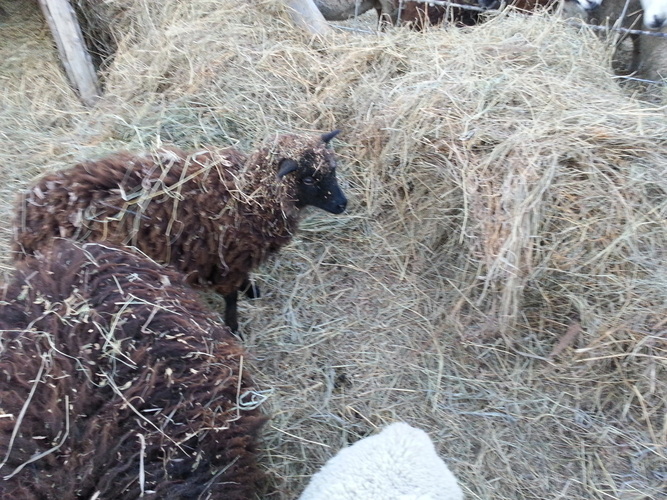It helps to take the small sheep out away from the large sheep, who tend to pull hay out and the hay then falls on the backs of the sheep. Each of the three years I have been here, I have tried different feeders. None have really worked. This year the feeder is vertical and the sheep can barely put their heads inside it to grab hay. The wool around their necks will be ruined by the end of winter and full of hay. It will be discarded for sure. This vertical sheep feeder makes it difficult for sheep with horns to eat well, since they cannot stick their heads in and after a few hours, most of the good hay is inaccessible to them. Fortunately, they are hardy sheep that will do well anyhow.
I removed four tiny lambs to a new pen, but they already had hay pulled down on them. The Babydoll sheep have tight wool and the hay really does not penetrate it. But the Icelandics have loose long wool and it is a magnet for the hay. These lambs are so small that the only real option would be to feed them on the ground, but they waste half of the hay then. As it is they waste a whole lot.
There are some other options. Coating the sheep is possible, but with the longwooled breeds like the Icelandics, the coats would need to be changed every month. Their wool grows quickly and felts easily so a tight coat would mean felted wool. I still want to try it for a few of the other breeds, like the Cotswolds.
So, when the hand spinners turn their noses up at the vegetative matter in the fleece, it is because of where the sheep come from and the breeds more than poor management. I keep trying for a solution. Maybe next year I will find it.



 RSS Feed
RSS Feed